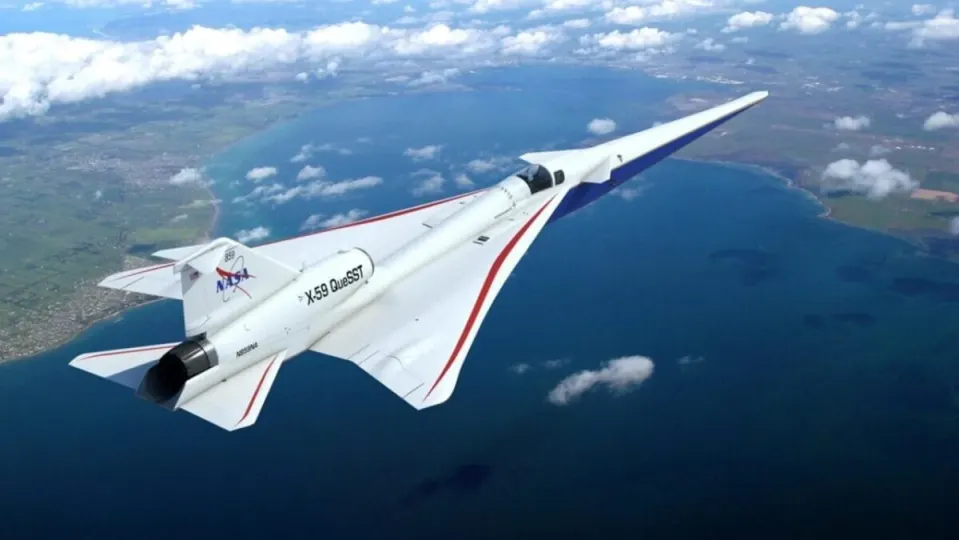The experimental aircraft X-59 Quiet SuperSonic Technology (QueSST) by NASA is one of the great promises of aviation. It is about to take flight, and this is everything we know so far.
As its name suggests, the aircraft is testing technology that dampens the sonic boom sound produced when an aircraft breaks the sound barrier.
The X-59 is designed to reduce the sudden noise to a quieter “sonic thump,” which could pave the way for supersonic passenger flights over the continental United States, which have been restricted due to noise pollution regulations.

An aircraft that can change everything
NASA recently shared a couple of images showcasing the X-59 on what is known as the “flight line,” the area between the hangar and the runway, at Lockheed Martin Skunk Works in Palmdale, California.
“The move from its construction site to the flight line is one of many milestones that prepare the X-59 for its first flight and subsequent flights,” NASA said this week, adding that the team will now conduct a series of critical ground tests to ensure the aircraft is ready for its inaugural flight.
One of these tests will involve flying the X-59 at supersonic speeds over a series of communities to observe how residents respond to the sonic boom generated during its high-speed flight.
Following this, NASA will share its findings with U.S. and international regulatory agencies, potentially opening up the possibility of commercial supersonic flights over land.
History of NASA’s supersonic aircraft
The X-59, which began development in 2016, is designed to fly at 55,000 feet (16,765 meters) with a cruising speed of Mach 1.42 (1,508 km/h), which is twice the speed of a conventional passenger aircraft.
At this speed, flight times between destinations will be dramatically reduced. The fastest flight between New York and London conducted by the Concorde – the supersonic passenger aircraft operated by British Airways and Air France until its retirement in 2003 – took only 2 hours and 53 minutes.
This means that a supersonic flight between New York and Los Angeles, which currently takes about 5 hours and 30 minutes, could be reduced to around 2 hours and 30 minutes or even less.
The Concorde flew between the United States and Europe, a route that was only permitted because the airports – Washington Dulles and JFK in New York – were located on the East Coast, which meant that the supersonic boom occurred over the Atlantic Ocean.
The X-59 could create a series of new and faster routes. Will it be manufactured in Albacete?
Some of the links added in the article are part of affiliate campaigns and may represent benefits for Softonic.


